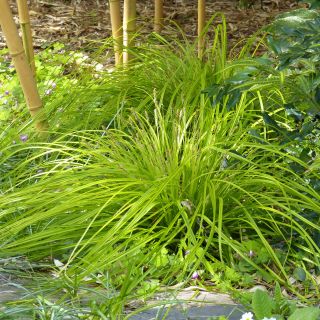20 000 varieties
Express delivery or delivery on your preferred date
Recovery guarantee on all our plants
Customer rating 4.4/5
Plantfit
Log in / Register
Existing customer?
New customer?
Create an account to track your orders, access our customer service and, if you wish, make the most of our upcoming offers.
My Account
Hello
Shipping country and language
Your country of residence may be:
For a better user experience on our website, you can select:
Your shipping country:
Andorra
Austria
Belgium
Bulgaria
Croatia
Czechia
Denmark
Estonia
Finland
France
Germany
Greece
Hungary
Iceland
Ireland
Italy
Latvia
Lithuania
Luxembourg
Monaco
Netherlands
Poland
Portugal
Romania
Slovakia
Slovenia
Spain
Sweden
Switzerland
Language:
French
English
Confirm
All reviews for category Biennials - autumn annuals

Carex oshimensis Everillo - Oshima Sedge
Product sheet
bracken
Like the rest of the order, it is very good.
CHINA
Robust plan, impeccable parcel.
cezac" does not have a direct translation in English. It appears to be a word in French that does not have an equivalent in English.
lovely young plants
Saint Ouen Sur Iton" translates to "Saint Ouen on the Iton" in British English.
Two cute little clumps, but already we can admire their bright and fresh colour: in semi-shade it's going to be stunning, I think.
Maisons Laffitte
One year after purchase review: has grown well, doing very well, no issues with the carex.
ANDILLY
Small bucket received, has already grown well and is well supplied to this day, adds a touch of exoticism and tanginess to the garden, really stands out from the others with its lemon yellow color, I adore it!!!
Cezac33
Beautiful super carex, easy and whatever the season brings a touch to the garden as a border or in a group in the midst of young plants.
Gorgeous (but a few precautions to take)
Among the sedges, the Oshima Everillo is clearly my favorite. Here are a few tips:
> It's better to get them already quite large; they will resist better and the recovery will be better than if they are taken too small in a bucket (or, in this case, prefer to plant them in spring rather than autumn). I also recommend mulching them at the base (definitely not planting them among other herbs, which will "eat" them very quickly).
> Personally, I find the ones I planted in semi-shade more beautiful than those exposed to full sun, as the acid green/chartreuse/yellow color is truly sublime and very bright. That being said, I have noticed that this plant does not burn in the sun; just that its color will tend more towards lemon yellow (which is also pretty, but less "refined" than the acid green/chartreuse tones obtained in semi-shade).
> Another tip: do NOT PRUNE THEM SHORT like Miscanthus, otherwise you risk killing them. Indeed, these herbs, unlike Miscanthus (Chinese reed), are EVERGREEN; so it is enough to "clean" them in spring (just remove dead parts). The fact that these herbs are evergreen is also an excellent asset if you want a colorful garden even in winter. You can also associate them with other colorful evergreen foliage such as the bluish foliage of lavender, the red-orange foliage of nandina domestica (varieties "Gulf Stream" for orange & "Obsessed Seika" for red), and the bright tones of lonicera nitida (boxleaf honeysuckle) "Baggesen's Gold" and "Lemon Beauty". You can also add a mahonia Media "Charity", for the magnificent shape of its shiny leaves, very unique (which you can choose to keep small by pruning, or let grow, but it takes up space), and a pyracantha (the "Saphyr" varieties resist fire blight), which will dazzle you in May with its myriad of small immaculate white flowers, followed by magnificent red, orange or yellow berries that you can admire in autumn and also part of winter. Such an association (like the one I have in my own flower beds, for evergreen plants) will create a stunning effect, in addition to requiring zero maintenance in the long run (all these plants being practically "indestructible", in addition to being beautiful). Finally, the dwarf varieties of abelia (semi-evergreen) will add the final touch! You can also opt for the different varieties of Berberis Thunbergii (you can find all the shapes and colors you want), which keep their foliage for a very long time and, as a result, can almost be considered semi-evergreen. For a beautiful contrast effect, I recommend the following varieties: "Orange Rocket", or the smaller variety, "Orange Ice" (almost fluorescent throughout the season), "Golden Torch" (a yellow flame, then orange in autumn, which does not burn in the sun), or "Golden Carpet" depending on the shape you desire, or "Diabolicum" (always in yellow tones, marbled with orange as a bonus). The variety "Harlequin", on the other hand, turns pink in summer. Finally, the variety "Atropurpurea" remains burgundy (then turns red in autumn). Unfortunately, too many French gardeners ignore these plants because of their thorns, even though they are, in my opinion, MUCH MORE BEAUTIFUL than many roses, which are also very thorny, in the sense that their evolving colors will enchant you throughout the season and offer a spectacle just as striking as flowers, but with the advantage of lasting much longer...
44220 - COUERON" would be translated as "44220 - COUERON" in British English as it is a proper noun and doesn't require translation.
Superb, its colour illuminates the garden throughout the col.
Bright
Received some beautiful flowers in February with a nice root system. Easy to plant.